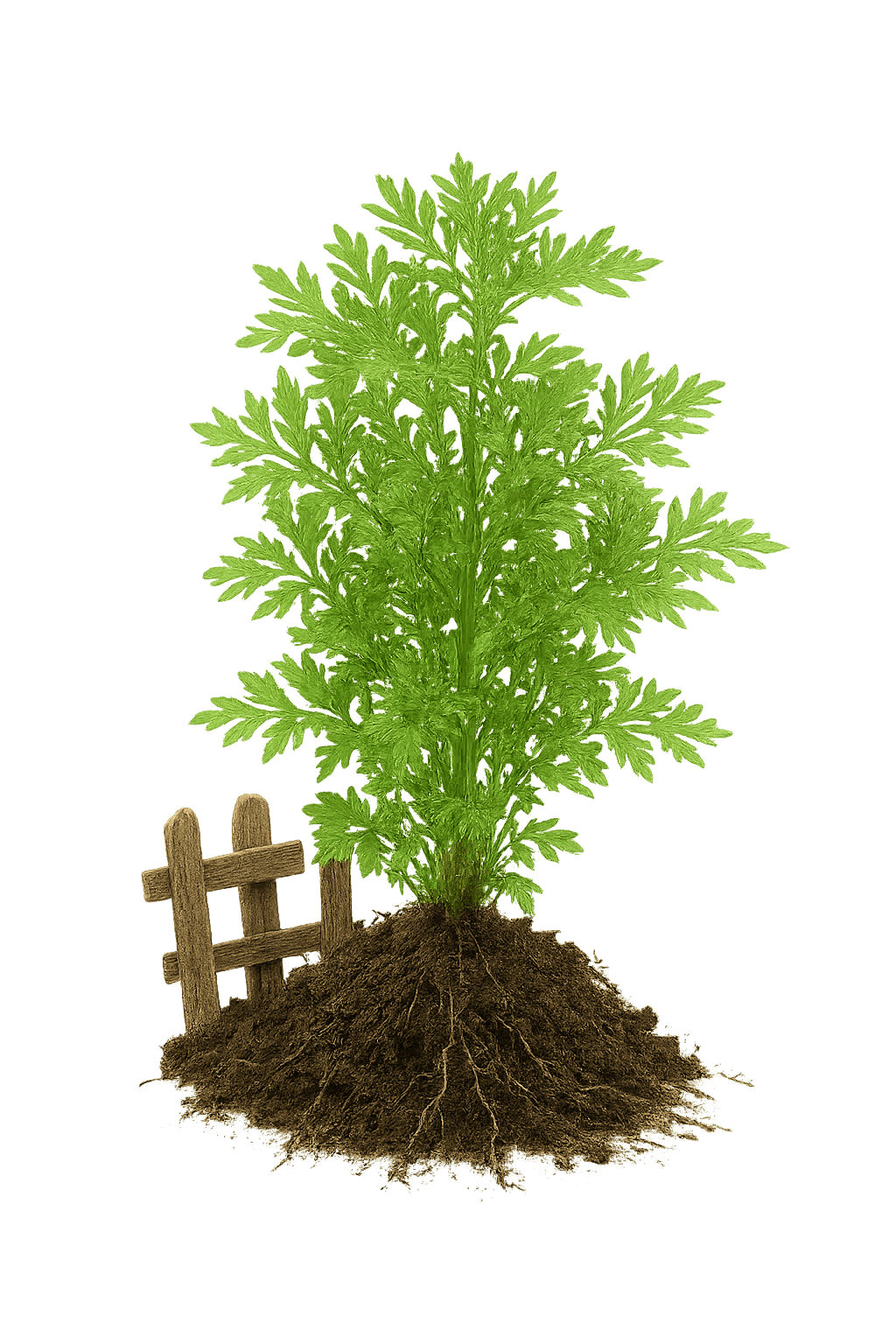Sweet Wormwood
Sweet Wormwood Detailed Encyclopedia
Sweet Wormwood is an important antimalarial herb containing artemisinin. It has heat-clearing, fever-reducing, and anti-inflammatory properties. Widely distributed across China, it is a crucial herb in traditional Chinese medicine for treating malaria, recognized with a Nobel Prize.

Basic Information
Family:Araliaceae
Scientific Name:Artemisia annua
Origin:Northeast China (Jilin, Liaoning, Heilongjiang), Korea
Harvest Period:Autumn (September-October)
Growth Years:5-6 years
Plant Height:30-60 cm
Morphological Characteristics
Leaves:Palmately compound leaves with 3-5 leaflets, obovate, serrated margins
Flowers:Umbel inflorescence, pale yellowish-green flowers, blooming in May-June
Roots:Fleshy taproot, cylindrical or spindle-shaped, yellowish-white
Stem:Erect stem, smooth and hairless
Growth Environment
Soil Requirements:Deep, fertile, well-drained sandy loam, pH 5.5-6.5
Water Requirements:Moderate moisture, avoid waterlogging
Light Requirements:Shade-loving, requires 60-70% shade
Temperature Requirements:15-25°C, cold-hardy, can withstand -40°C
Humidity Requirements:Relative humidity 70-80%
Classification & Varieties
Main Varieties
Processing Types
💊 Medicinal Value
Nature & Taste:Bitter, Pungent, Cold
Meridian:Liver, Gallbladder
Main Efficacies
- •Greatly tonifies vital energy, suitable for severe qi deficiency and collapse
- •Tonifies spleen and lung, improves poor appetite, fatigue, cough and shortness of breath
- •Generates body fluid and quenches thirst, treats fluid deficiency and thirst
- •Calms the mind and improves intelligence, treats insomnia, forgetfulness, palpitations
- •Enhances immunity, anti-fatigue, anti-aging
Active Ingredients
📖 Usage Methods
Dosage
- •Decoction: 3-9g
- •Powder: 1-2g
- •Stew: Simmer with meat or soup
- •Tea: Slice and steep in water
⚠️ Contraindications
- •Contraindicated in excess heat syndrome and hyperactivity of yang
- •Use with caution in hypertension patients
- •Use under medical supervision during pregnancy
- •Children should use in moderation
🌱 Cultivation Techniques
Cultivation Points
- •Select shaded forest land with good drainage
- •Deep tillage, apply sufficient organic fertilizer
- •Autumn sowing, row spacing 20-25cm
- •Provide shade, timely watering and fertilizing
Common Pests & Diseases
Prevention Measures:Strengthen field management, maintain proper ventilation and light
Treatment Methods:Spray carbendazim or methylthiophanate at early stage
✂️ Harvest & Processing
Harvest Timing:Autumn (September-October), harvest after 5-6 years of growth
Harvest Method:Carefully dig up roots, remove stems and soil
Processing Methods
- •Fresh ginseng: Wash and use directly
- •White ginseng: Sun-dry or air-dry
- •Red ginseng: Steam and dry
Storage:Store in cool, dry place, sealed to prevent moisture and insects
🏛️ Cultural Value
History:Ginseng has been used for over 4000 years, listed as superior grade in Shennong's Classic of Materia Medica
Symbolism:Symbolizes vitality, longevity, and health
Gift Culture:Traditional precious gift for health and wellness
Modern Research:Modern research confirms anti-fatigue, immune-enhancing, and anti-aging effects
Market Value:Jilin ginseng is world-renowned, an important medicinal material and export commodity